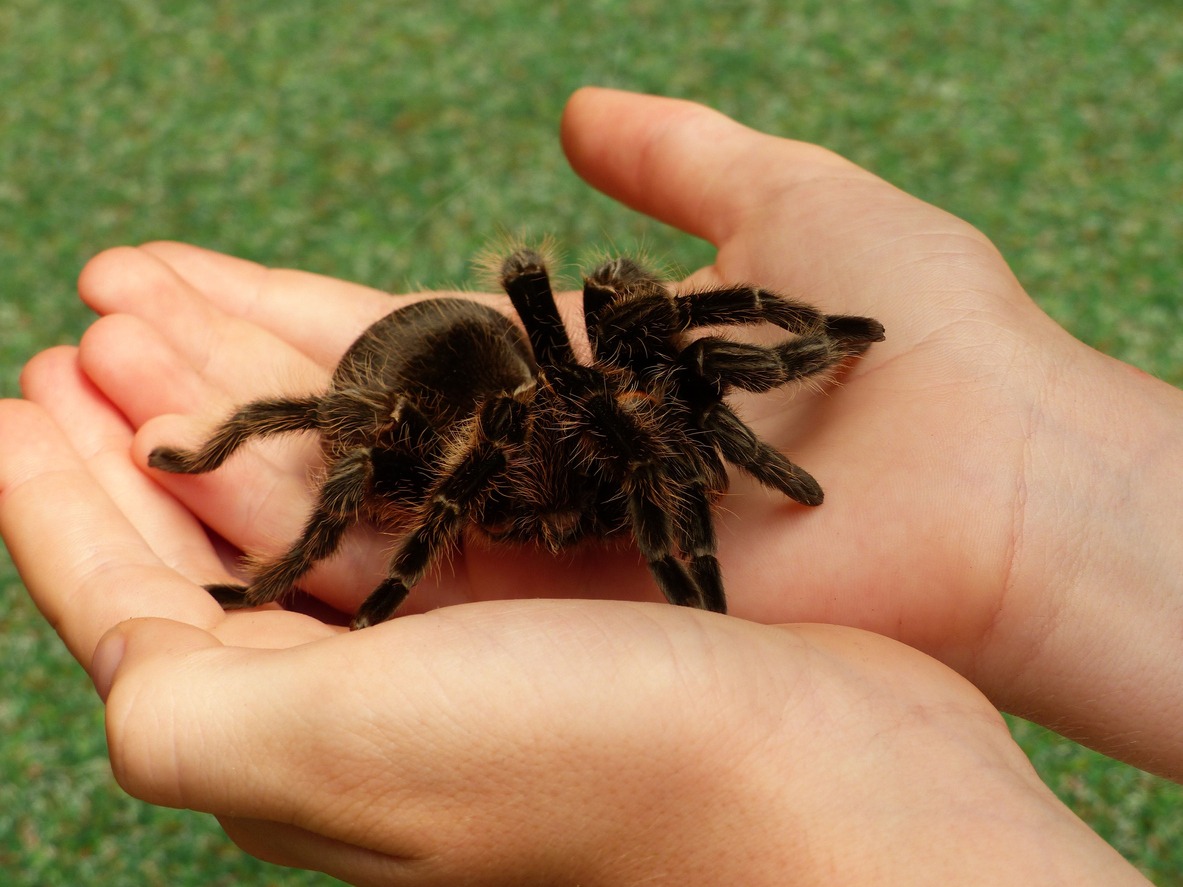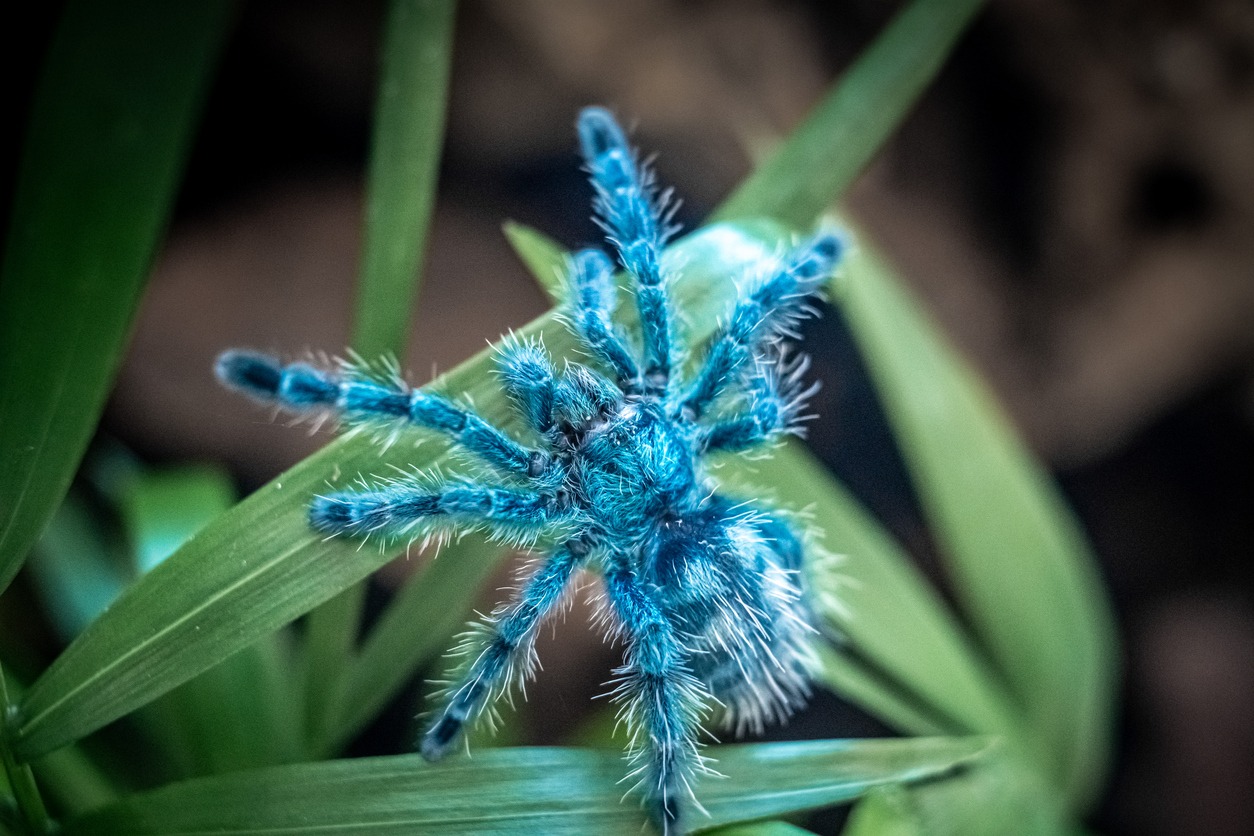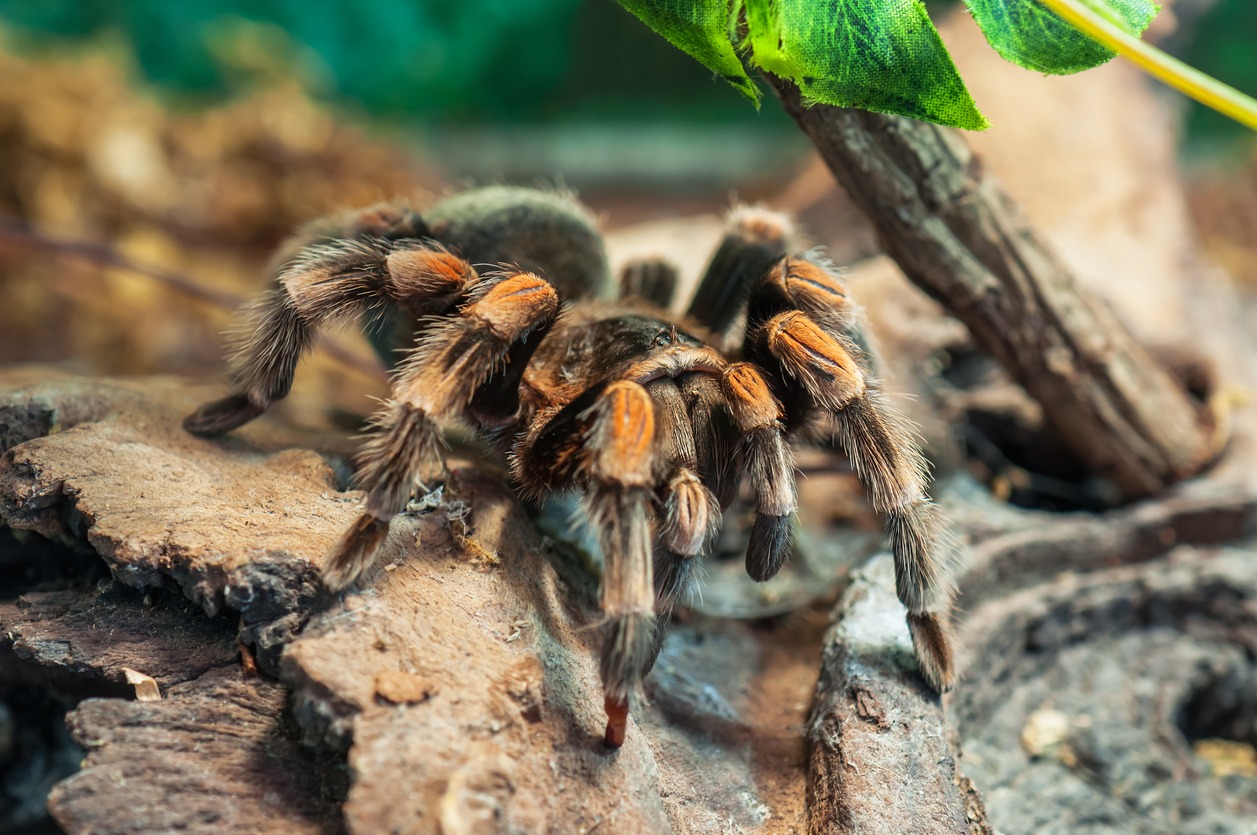Tarantulas are fascinating creatures that have captured the curiosity of spider enthusiasts and researchers alike. With their unique physical characteristics, intricate anatomy, and diverse range of species, tarantulas offer a wealth of knowledge to explore.
The Physical Characteristics of Tarantulas
One of the first things that sets tarantulas apart from other spider species is their impressive size. While some tarantulas are relatively small, with a leg span of just a few inches, others can grow to be as large as a dinner plate. Their size alone makes them a formidable presence in the spider world.
Tarantulas also exhibit a wide range of coloration. Some species are brightly colored, with vibrant patterns and markings, while others are more subtle, blending into their surroundings. This diversity in coloration serves various purposes, such as attracting mates, warning predators of their venomous nature, or camouflaging themselves for hunting or hiding.
Another notable feature of tarantulas is the presence of urticating hairs. These hairs are found on their abdomen and function as a defense mechanism. When threatened, tarantulas can flick these hairs into the air, causing irritation and discomfort to potential predators. This unique adaptation provides an additional layer of protection for tarantulas in the wild.
External Anatomy
To truly appreciate tarantulas, it is essential to understand their anatomy.
The protective outer layer of tarantulas is called the exoskeleton. Similar to other arthropods, this tough and flexible exoskeleton serves as a shield, protecting the tarantula’s delicate internal organs. It also provides support and structure to the tarantula’s body, allowing it to move and survive in its environment.
The cephalothorax, also known as the prosoma, is the front portion of the tarantula’s body, housing the head and the legs. This region is covered by the carapace, a hard plate-like structure that provides additional protection for the vital organs.
Each leg consists of several segments, including the coxa, trochanter, femur, patella, tibia, and metatarsus. At the end of each leg, tarantulas have two tiny claws that help them grip onto surfaces.
In addition to their legs, tarantulas have two specialized appendages called pedipalps, which are located near the mouth. The pedipalps have multiple functions, including sensory perception, defense, and reproduction. Male tarantulas use their pedipalps to transfer sperm to the female during mating, while both males and females use them to manipulate prey and explore their surroundings.
The abdomen, or opisthosoma, is the larger posterior portion of the tarantula’s body. It contains the digestive system, reproductive organs, and silk glands. The abdomen may vary in size and shape among different tarantula species and is often covered in fine hairs or urticating bristles, which serve various purposes such as defense and sensory perception.
The abdomen of a tarantula is where you will find the spinnerets – silk-producing organs that enable tarantulas to create intricate webs or construct silk-lined burrows. The silk produced by tarantulas has various uses, such as creating egg sacs to protect their offspring or creating draglines for navigation or safety.
Internal Anatomy
Unlike humans and many other animals, tarantulas do not have a mouth with teeth. Instead, they possess a pair of fangs, known as chelicerae, which are capable of injecting venom into their prey. Tarantulas also inject digestive enzymes into their victims, essentially turning them into a liquid meal. They then use their sucking stomach to extract and absorb the liquefied nutrients.
In the respiratory system, tarantulas have a rather unconventional way of breathing compared to other spiders. While most spiders rely on book lungs or trachea, tarantulas have both. Book lungs, situated in their abdomen, are specialized structures that allow them to extract oxygen from the air. Tracheae, on the other hand, are tubes that extend throughout their bodies, providing oxygen to the internal organs. This dual respiratory system enables tarantulas to thrive in a variety of environments, from the depths of rainforests to the arid landscapes of deserts.
When it comes to reproduction, tarantulas have their own intricate rituals and specialized structures. Mating in tarantulas can be a dangerous affair, as females are known to occasionally devour their partners. But if the male is successful, he will use his pedipalps to transfer sperm into the female’s reproductive organs. In turn, the female possesses spermatheca, which are unique storage structures for sperm. These spermatheca allow the female to control when and if she fertilizes her eggs, ensuring the continuation of the species.
Identifying Different Tarantula Species
With over 900 known species of tarantulas worldwide, each with unique characteristics and behaviors, identification becomes a crucial aspect for researchers and enthusiasts. Identifying tarantula species often involves studying patterns on their exoskeleton, leg structure, and the presence of specific markings or spines.
For example, some tarantulas have distinct patterns on their exoskeleton, which can vary from stripes to intricate designs resembling a mosaic. Others have leg structures that differ in size or shape, allowing for differentiation between species. Additionally, specific markings, such as a brightly colored spot on the abdomen or unique spines on the legs, can be used as identifying features.
Behavioral traits can also provide valuable clues when it comes to identifying tarantulas. Observing their behaviors, such as burrowing habits, web spinning techniques, aggression levels, and hunting strategies, can help narrow down the possibilities. For example, some tarantulas are skilled diggers, spending most of their time underground, while others are talented web builders, constructing intricate and expansive webs to ensnare their prey. By understanding these unique behaviors, you can gain insights into the species you are observing and differentiate between them.
Geographic distribution is another key aspect to consider when identifying tarantulas. Different species are found in specific regions around the world, and their natural habitat can provide valuable clues. For instance, the Brazilian salmon pink tarantula (Lasiodora parahybana) is native to the Atlantic Forest region of Brazil, while the Mexican red knee tarantula (Brachypelma smithi) is found in the deserts of Mexico. Understanding the geographic distribution of tarantulas can help narrow down the possibilities and make the identification process more manageable.
Adapting to Different Habitats
Tarantulas are incredibly adaptable creatures, capable of surviving in a wide range of habitats across the globe. From deserts to rainforests, tarantulas have developed various strategies to thrive in their environments.
Their anatomy and physical features play a significant role in their adaptability. For instance, tarantulas that inhabit desert regions often have specialized hairs on their legs and abdomen, which help minimize water loss and protect them from the scorching sun. Conversely, species found in rainforests may have longer legs and more agile bodies, enabling them to navigate dense vegetation and climb trees.
In addition, tarantulas have developed the ability to burrow underground, creating elaborate tunnels for shelter and protection. This behavior is facilitated by their powerful legs, strong jaws, and the silk produced by their spinnerets. Burrowing allows tarantulas to regulate their body temperature, avoid predators, and ambush prey.
Tips for Tarantula Identification and Care
Proper care is crucial for the well-being of pet tarantulas. Providing a suitable enclosure is vital. Tarantulas require spacious tanks with appropriate substrate, hiding spots, and climbing structures.
Maintaining the right temperature and humidity levels is important, as tarantulas come from diverse habitats and have specific environmental needs. Feeding them a balanced diet of live insects, such as crickets or roaches, is also essential for their nutrition. Finally, regular monitoring for signs of illness or stress, and seeking veterinary care is crucial for maintaining the overall health of your tarantula.
Conclusion
Understanding the anatomy and identification of tarantulas is crucial for anyone working with these fascinating creatures. By familiarizing yourself with their body parts and unique features, you can not only accurately identify different species, but also gain a deeper appreciation for these arachnids. Whether you are a researcher, breeder, or simply an admirer of tarantulas, taking the time to educate yourself on their anatomy will only enhance your experience with these complex creatures.




